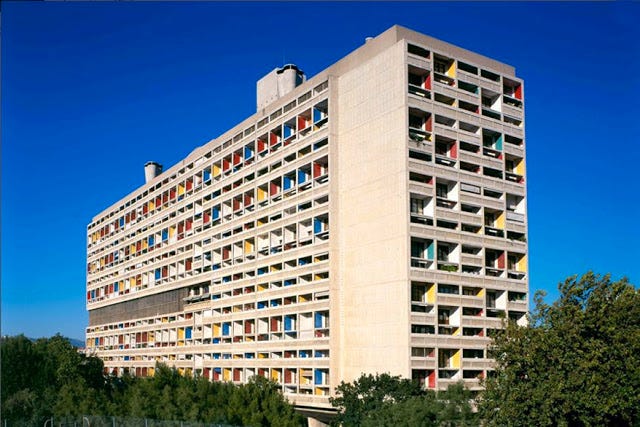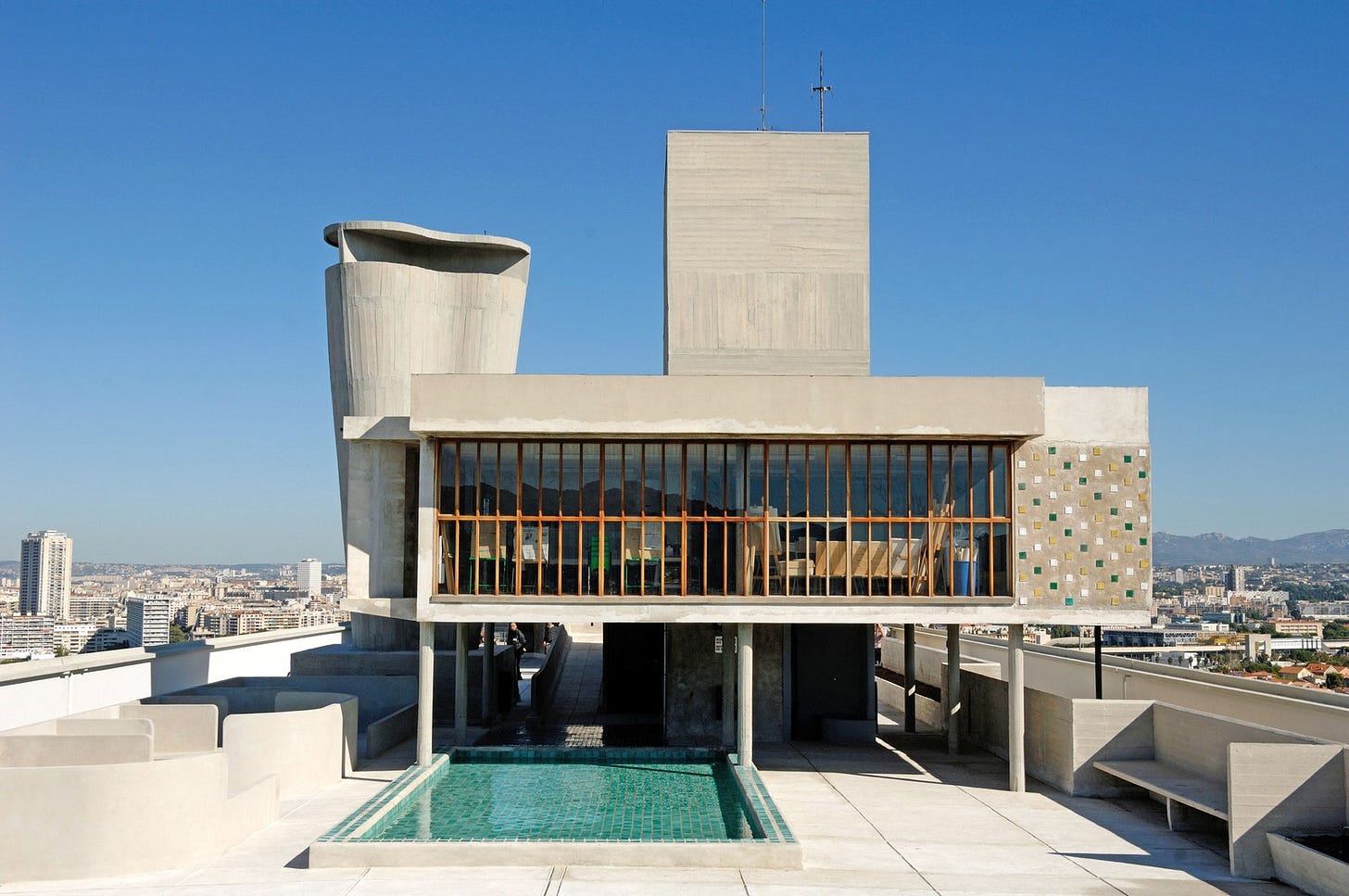In the U.S., the TV show Mad Men (I confess – I’ve never seen it) made everyone ga-ga about the 50s (as problematic as that false nostalgia is). And it ignited a new obsession with the mid-century modern aesthetic. It was in the throes of this obsession that many Americans first learned the names of MCM masters (I’m guessing at some point we’ll peel back the layers of this onion, too). Now, a whole new generation could now identify the iconic style of Le Corbusier’s boxy sofas, angular sling chairs and chaise loungers – reproductions of which started showing up in living rooms across the country.
Ask most of these same folks about brutalism, however, and you’ll probably get blank stares, even though it was Le Corbusier himself who is credited with spawning the movement with his Unite d’Habitation design principle.
Unite d’Habitation was truly a new way of thinking about residential living, one that envisioned a communal experience, a self-contained “vertical garden city” where inhabitants lived, gathered, shopped and played. The ultimate vision was a certain operational autonomy from the outside world. It was spawned when Le Corbusier was commissioned by the French government to build a multi-family residential housing project for those who had been displaced as a result of the destruction during World War II.
The first, and perhaps still most famous, example of that principle is the La Cite Radieuse (the radiant city) in Marseille. 140 meters long, 24 meters wide and 56 meters high, La Cite Radieuse is truly monumental. Its 12 residential stories — each with 58 duplex apartments — house 1,600 residents.

Note that the term brutalism is not related to the typically harsh exteriors of brutalist construction, but actually to the material (beton-brut) itself. (Photo credit: moderndesign.org)
Le Corbusier departed from his iconic stark, white facades with this construction — opting instead to use reinforced beton-brut concrete. Whether this was purely an economic decision, or an attempt at making a new statement with the rougher, less pristine material, I’m not sure (I bet there are a million articles that ponder such things), but with this choice the style was born.

Overlooking Marseille and the Mediterranean, the communal roof space at Radieuse has been described as “though Odysseus is beside you.” (Photo by Alamy
Many of Radiuese’s inhabitants lived in the complex well into their elderly years, and the complex is still thriving today, home to primarily middle-class residents. The building also houses shops, medical facilities, an exhibition center and a small hotel (originally hostel space). It has been declared a UNESCO World Heritage Site.

One of the most striking features of the construction are the giant “piloti” supporting the construction; there is something truly awe-inspiring standing “under” such a giant monolith. (Stock photo.)
While in France, be sure to also check out the other, lesser known Unites: La Maison Radieuse in Rezé; the Le Corbusier Site in Firminy; and La Cité Radieuse in Briey-en-Forêt. You know, when people can actually travel again.


